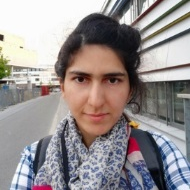Advances in Spintronics of Noncollinear Magnets
A special issue of Materials (ISSN 1996-1944). This special issue belongs to the section "Materials Physics".
Deadline for manuscript submissions: closed (20 April 2023) | Viewed by 3790
Special Issue Editor
Special Issue Information
Dear Colleagues,
The term noncollinear magnetic materials refers to the class of materials in which the direction of spins depends on position in such a way that there is no specific direction in which all the spins are aligned (anti)parallel. This spin arrangement can be coplanar or noncoplanar, including systems with spin spirals and helicoids, canted spins and skyrmions. These noncollinear spin structures, which produce real-space or momentum-space Berry phases, can give rise to novel physical phenomena including the topological Hall effect, anomalous Hall effect, spin-polarized current, spin Hall effect, multiferroicity and Weyl fermions.
Noncollinear magnetic materials have attracted considerable attention in recent years due to the non-trivial nature of their magnetic structures. Nevertheless, their application to the emerging field of spintronics requires coherent efforts of the community.
This Special Issue calls for original research and review articles on key developments of noncollinear magnets for spintronics. This includes novel theoretical developments towards the understanding of noncollinear spin effects and experimental works utilizing these effects to realize novel spintronic applications and device functionalities. Research topics of interest include, but are not limited to:
1) Electric-field control of the noncollinear spin structure and the detection of spin-polarized currents;
2) Anisotropic magnetoresistance and domain-wall-related magnetoresistance effects;
3) Possible applications with coupled noncollinear and collinear magnetic systems in spintronics;
4) Dynamic excitation such as spin waves, surface acoustic waves and microwaves in spintronic devices;
5) Review and perspective articles for future research on spintronics of noncollinear magnets.
Dr. Aisha Aqeel
Guest Editor
Manuscript Submission Information
Manuscripts should be submitted online at www.mdpi.com by registering and logging in to this website. Once you are registered, click here to go to the submission form. Manuscripts can be submitted until the deadline. All submissions that pass pre-check are peer-reviewed. Accepted papers will be published continuously in the journal (as soon as accepted) and will be listed together on the special issue website. Research articles, review articles as well as short communications are invited. For planned papers, a title and short abstract (about 100 words) can be sent to the Editorial Office for announcement on this website.
Submitted manuscripts should not have been published previously, nor be under consideration for publication elsewhere (except conference proceedings papers). All manuscripts are thoroughly refereed through a single-blind peer-review process. A guide for authors and other relevant information for submission of manuscripts is available on the Instructions for Authors page. Materials is an international peer-reviewed open access semimonthly journal published by MDPI.
Please visit the Instructions for Authors page before submitting a manuscript. The Article Processing Charge (APC) for publication in this open access journal is 2600 CHF (Swiss Francs). Submitted papers should be well formatted and use good English. Authors may use MDPI's English editing service prior to publication or during author revisions.
Keywords
- noncollinear spin interaction
- spin-momentum locking
- non-reciprocity of spin waves
- spin pumping
- spin diode effect
- helical magnetic phases
- spin Hall effect
- skyrmions
- magnetoresistance
- topological hall effect






